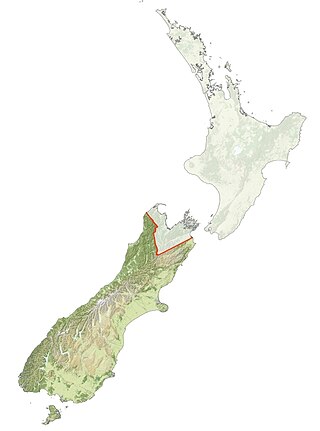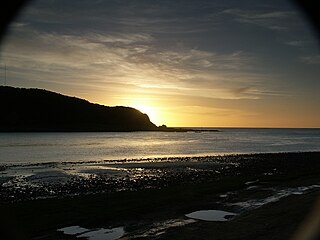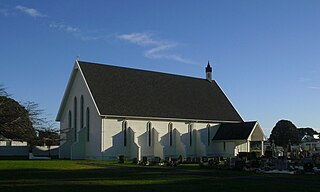
The Wairau Affray of 17 June 1843, also called the Wairau Massacre and the Wairau Incident, was the first serious clash of arms between British settlers and Māori in New Zealand after the signing of the Treaty of Waitangi and the only one to take place in the South Island. The incident was sparked when a magistrate and a representative of the New Zealand Company, who held a duplicitous deed to land in the Wairau Valley in Marlborough in the north of the South Island, led a group of European settlers to attempt to arrest Ngāti Toa chiefs Te Rauparaha and Te Rangihaeata. Fighting broke out and 22 British settlers were killed, nine after their surrender. Four Māori were killed, including Te Rongo, who was Te Rangihaeata's wife.

Te Rangihaeata, was a Ngāti Toa chief, nephew of Te Rauparaha. He had a leading part in the Wairau Affray and the Hutt Valley Campaign.

The Musket Wars were a series of as many as 3,000 battles and raids fought throughout New Zealand among Māori between 1806 and 1845, after Māori first obtained muskets and then engaged in an intertribal arms race in order to gain territory or seek revenge for past defeats. The battles resulted in the deaths of between 20,000 and 40,000 people and the enslavement of tens of thousands of Māori and significantly altered the rohe, or tribal territorial boundaries, before the signing of the Treaty of Waitangi in 1840. The Musket Wars reached their peak in the 1830s, with smaller conflicts between iwi continuing until the mid 1840s; some historians argue the New Zealand Wars were a continuation of the Musket Wars. The increased use of muskets in intertribal warfare led to changes in the design of pā fortifications, which later benefited Māori when engaged in battles with colonial forces during the New Zealand Wars.

Ngāi Tahu, or Kāi Tahu, is the principal Māori iwi (tribe) of the South Island. Its takiwā is the largest in New Zealand, and extends from the White Bluffs / Te Parinui o Whiti, Mount Mahanga and Kahurangi Point in the north to Stewart Island / Rakiura in the south. The takiwā comprises 18 rūnanga corresponding to traditional settlements. According to the 2018 census an estimated 74,082 people affiliated with the Kāi Tahu iwi.

Kaiapoi is a town in the Waimakariri District of the Canterbury region, in the South Island of New Zealand. The town is located approximately 17 kilometres north of central Christchurch, close to the mouth of the Waimakariri River. It is considered a satellite town of Christchurch and is part of the Christchurch functional urban area.

Waikanae is a town on the Kāpiti Coast, 60 kilometres north of the Wellington CBD. The name is a Māori word meaning "waters" (wai) "of the grey mullet".

Ngāti Toa, Ngāti Toarangatira or Ngāti Toa Rangatira, is a Māori iwi (tribe) based in the southern North Island and in the northern South Island of New Zealand. Its rohe extends from Whanganui in the north, Palmerston North in the east, and Kaikōura and Hokitika in the south. Ngāti Toa remains a small iwi with a population of only about 9000. It has four marae: Takapūwāhia and Hongoeka in Porirua City, and Whakatū and Wairau in the north of the South Island. Ngāti Toa's governing body has the name Te Rūnanga o Toa Rangatira.

Ōtaki is a town in the Kāpiti Coast District of the North Island of New Zealand, situated half way between the capital city Wellington, 70 km (43 mi) to the southwest, and Palmerston North, 70 km (43 mi) to the northeast.
The history of the Canterbury Region of New Zealand dates back to settlement by the Māori people in about the 10th century.

Octavius Hadfield was Archdeacon of Kāpiti, Bishop of Wellington from 1870 to 1893 and Primate of New Zealand from 1890 to 1893. He was a member of the Church Missionary Society (CMS) for thirty years. He was recognised as an authority on Māori customs and language. His views on Māori rights, expressed in several books strongly criticised the actions of the New Zealand Government. Hadfield married Catherine (Kate) Williams a daughter of the Rev. Henry Williams and Marianne Williams.
Ngāti Rārua are a Māori tribe of the Tainui tribal confederation.

Te Pēhi Kupe was a Māori rangatira and war leader of Ngāti Toa and the uncle of Te Rauparaha. He took a leading part in what became known as the Musket Wars.

Rangi Kuīni Wikitōria Topeora (?–1865-1873?) was a notable New Zealand tribal leader or chief, peacemaker and composer of waiata. Of Māori descent, she identified with the Ngāti Toa iwi.
Tama-i-hara-nui , also known as Te Maiharanui and Tamaiharanui, was a New Zealand Māori chief of Ngāi Tahu. He was described as "strong and ruthless" and was a central figure in the 1820s "kai huanga" feud, meaning "eat relatives". Tama-i-hara-nui angered Ngāti Toa by letting a group of their chiefs into Kaiapoi pā and then killing them. Te Rauparaha, one of the Ngāti Toa chiefs who stayed outside of the pā, returned to Banks Peninsula in November 1830 and captured Tama-i-hara-nui. He was taken to Ōtaki, where he was tortured by the wives of the chiefs who had been killed at Kaiapoi pā, and then killed himself.
Te Mātenga Taiaroa was a leader of Ngāi Tahu, a Māori iwi (tribe) of the South Island of New Zealand. Taiaroa belonged to Ngāi Te Ruahikihiki and Ngāti Moki hapū of Ngāi Tahu, which were centred on Taumutu, at the southern end of Lake Ellesmere / Te Waihora. From the 1830s to the 1860s, he was a leader at Ōtākou on the Otago Peninsula in association with his cousin Karetai. in the 1830s he fought against Te Rauparaha and Ngāti Toa, sometimes in conjunction with Tūhawaiki. He was later involved in peacemaking with Ngāti Toa. In 1856 he attended the meeting of Māori chiefs at Pūkawa, Lake Taupō, which elected Pōtatau Te Wherowhero as the first Māori King. In 1860 he attended the Kohimarama conference of Māori chiefs in Auckland, organised by the government. In 1859 Taiaroa was baptised by a Methodist minister and took the Christian name of Te Mātenga (Marsden). Hōri Kerei Taiaroa was one of his children.

Rangiātea Church is a Māori Anglican church located in Ōtaki, in the Kāpiti Coast District on the North Island of New Zealand. The original church was completed in 1851. On 7 October 1995, inspired by racial tensions, the church was destroyed by arson. At the time of its destruction, the church was the oldest Māori Anglican church in New Zealand.
The history of the Nelson Region of New Zealand dates back to settlement by the Māori people in about the 12th century. The Nelson and Marlborough Region were known to the Māori as Te Tau Ihu o Te Waka a Maui which means "The Prow of the Canoe of Maui".

Takapūneke, with the location also known as Red House Bay, is a former kāinga—an unfortified Māori village—adjacent to present-day Akaroa, New Zealand. Takapūneke was a major trading post for the local iwi (tribe), Ngāi Tahu, as there was safe anchorage for European vessels. The site is of significance to Ngāi Tahu as their tribal chief, Tama-i-hara-nui, was captured here by North Island Ngāti Toa chief Te Rauparaha, and then tortured and killed. The village itself was raided and subject of a massacre, with the events subsequently called the Elizabeth affair. There is a direct link from the massacre in 1830 to the signing of the Treaty of Waitangi in 1840, giving the site a status of national significance.
Ngāti Tūmatakōkiri is a Māori iwi (tribe) of New Zealand, who arrived on the Kurahaupō waka. In the 1600s the iwi settled northwestern South Island, becoming a major power in the region until the 1800s. In 1642, members of Ngāti Tūmatakōkiri made the first known contact between Europeans and Māori, when Dutch explorer Abel Tasman visited Golden Bay / Mohua.
Ross Calman is a New Zealand Māori writer, editor, historian, and translator of the Māori language.















